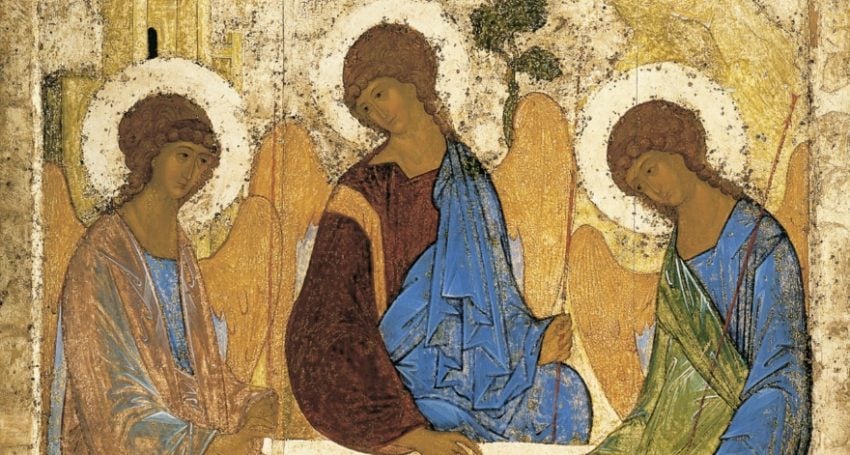Welcoming the stranger
Justice & Advocacy
“The idea of welcoming the stranger continues to find resistance today in so many ways. In the face of that resistance, our faith urges us toward building a more inclusive world, enriched by encounters with those who are different,” says The Very Rev’d Dr Peter Catt

One day, God walked in, pale from the grey steppe,
slit-eyed against the wind, and stopped,
said, Colour me, breathe your blood into my mouth.
I said, Here is the blood of all our people,
these are their bruises, blue and purple,
gold, brown, and pale green wash of death.
These (god) are the chromatic pains of flesh,
I said, I trust I shall make you blush,
O I shall stain you with the scars of birth
For ever, I shall root you in the wood,
under the sun shall bake you bread
of beechmast, never let you forth
To the white desert, to the starving sand.
But we shall sit and speak around
one table, share one food, one earth.
(“Rublev” by Rowan Williams)

Rublev’s famous early 15th century icon, The Trinity, showing the three Angels being hosted by Abraham at Mambré (Andrei Rublev, Public domain, via Wikimedia Commons)
“Rublev” by Rowan Williams was inspired by Rublev’s icon of The Trinity (pictured). The icon in turn was inspired by the story found in Genesis 18 in which Abraham entertains three foreign travellers. The three visitors represent a visit from the divine.
Like many Old Testament stories, the story has a very positive attitude towards the idea of offering hospitality to strangers. It was a radical idea at the time. Humans tend to prefer to deal with people with whom they are familiar; people like them (us).
The idea of welcoming the stranger continues to find resistance today in so many ways. In the face of that resistance, our faith urges us toward building a more inclusive world, enriched by encounters with those who are different.
First published in the St John’s Cathedral Precinct e-News on 10 July 2023.






